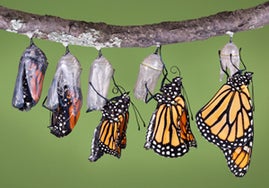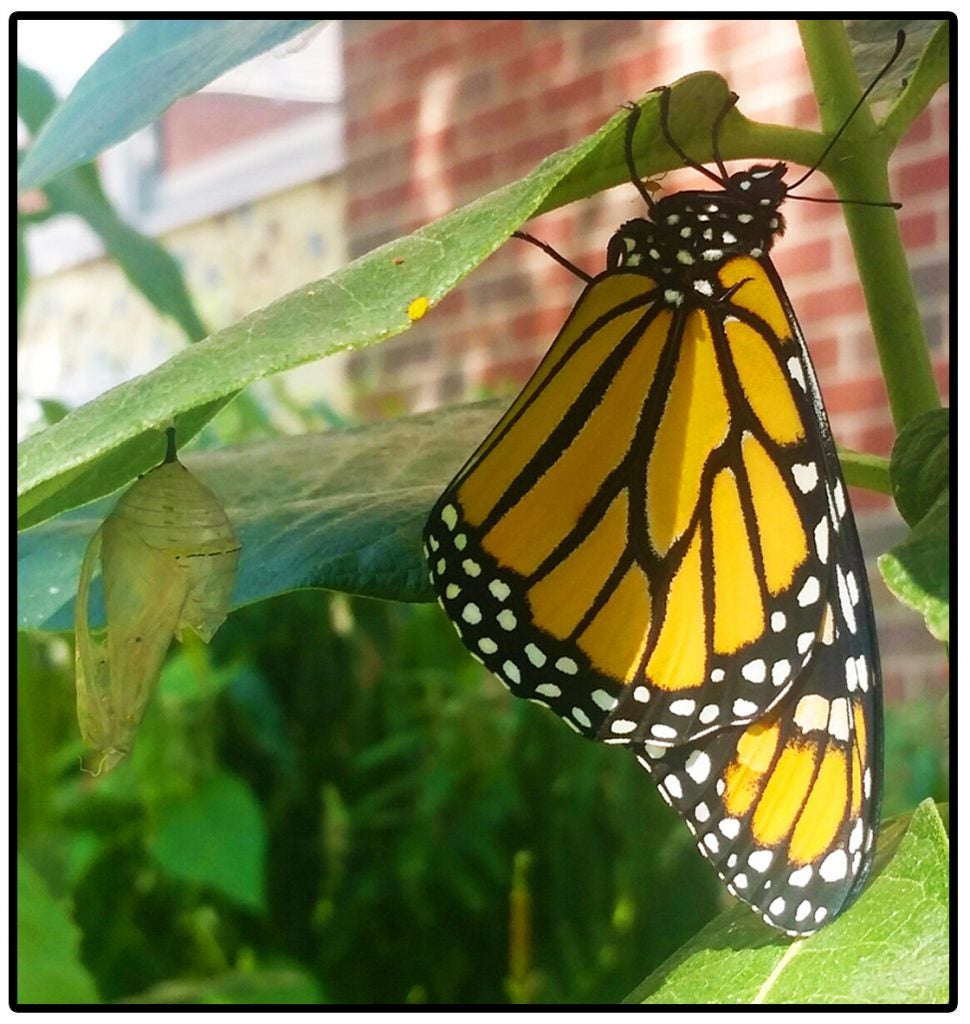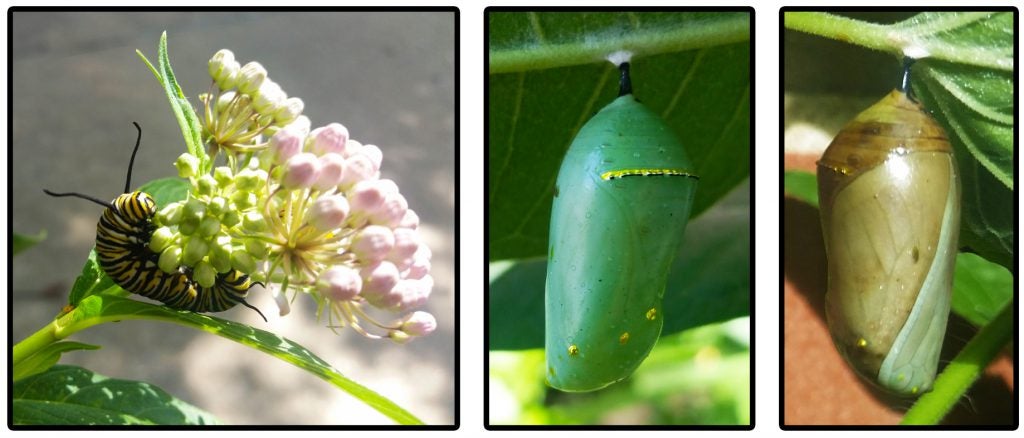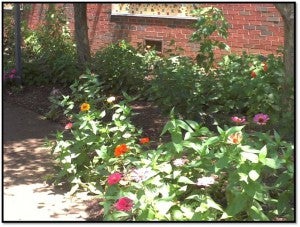All of the plants for this garden were grown from seeds donated by a non-profit organization called Monarch Watch. This Monarch Waystation Seed Kit comes with a mix of 8 different plants to support every stage of the butterfly’s life. These plants were grown in the Greenhouse.
This garden is located at the North West corner of Buskirk dorm.
The flight of the Monarch’s is the longest known distance insect migration on Earth: 3,000 miles! This migration is one of the world’s greatest natural wonders. However, it is threatened by habitat loss in both North America and overwintering sites. The Marshall University Monarch Waystation is a small step towards much needed conservation efforts across the United States.
 Monarch Butterfly populations are declining due to loss of habitat, forest degradation, and the widespread use of pesticides. They rely mostly on Milkweed plants for survival, as it is the only plant upon which they lay eggs and their larvae feed. Millions migrate to California and Mexico every year. However, due to natural disasters and urban development their food sources are not as available as they once were.
Monarch Butterfly populations are declining due to loss of habitat, forest degradation, and the widespread use of pesticides. They rely mostly on Milkweed plants for survival, as it is the only plant upon which they lay eggs and their larvae feed. Millions migrate to California and Mexico every year. However, due to natural disasters and urban development their food sources are not as available as they once were.
Honeybees, hummingbirds, and many other pollinators can also benefit from the butterfly garden. This is a wonderful all around addition to campus life and a little ecosystem all by itself. Urban access to these flowers can have a strong impact on the tiny creatures around us. Even lizards and frogs can be found. This is a great spot to sit down and enjoy the smaller things in life.
Some of the flowers you can find are the Purple Coneflower, Scarlet Sage, Tithonia Torch, Zinnia and Dahlia’s. All of these are great food sources for the butterfly. As you take a walk around see what flowers you can identify. Here are a few that you might run across.
Log onto www.monarchwatch.org for instructions to start your own garden!
References:
- Monarch Butterflies, Monarch Butterfly Pictures, Monarch Butterfly Facts – National Geographic. (n.d.). Retrieved October 19, 2014.
- Monarch Watch: Monarch Waystation Program. (n.d.). Retrieved October 19, 2014, from http://monarchwatch.org/waystations/index.html
- Photo credits: http://www.kerneliv.dk and Lambly Nursery


